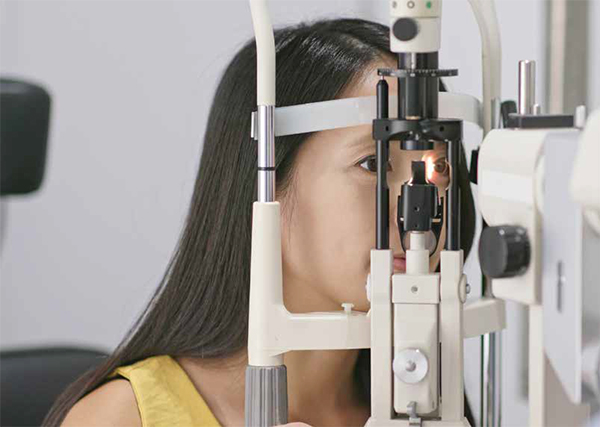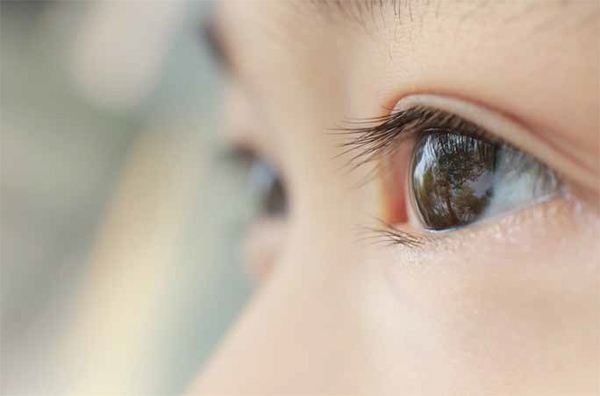The merits of an eye health ecosystem is immense – it delivers a personalised, intuitive, and integrated patient experience, and eye care professionals can enhance productivity and engage with a broad set of caregivers, improving eye health outcomes and affordability. Over the next few years, Singapore will see the roll out of a brand new eye health ecosystem with a projected investment of over SGD10 million. As we work towards changing the trajectory of eye health, public-private partnerships will continue to be critical in ensuring the seamless delivery of care to meet patients’ eye health needs at every life stage.

Sight is the most precious of our five senses, and accounts for 80% of what we learn and remember 1. However, we are seeing the risk of losing the gift of sight rapidly increasing globally. While there has been tremendous progress in advancing the trajectory of eye health over the years, there is still a lot of work to be done.
Globally, at least 2.2 billion people have a near or distance vision impairment. In at least one billion – or almost half – of these cases, vision impairment could have been prevented or is yet to be addressed, with uncorrected refractive errors and cataracts being the leading causes of vision impairment and blindness.2 Moving forward, myopia alone will impact nearly half of the global population by 2050.3
Most notably, compromised eye health does not just impact lives, but also livelihoods. Beyond affecting quality of life, it also leads to reduced
employment prospects and work productivity. According to a recent study by the Lancet Global Health Commission on Global Eye Health, vision impairment and blindness has been estimated to cost a total of US $408.5 billion of potential global productivity losses annually.4
Closer to home, Asia-Pacific as a region calls for greater attention. Home to a population of almost 4.7 billion and one of the most rapidly ageing regions, addressing eye care needs in this region would have a significantly positive impact on achieving universal eye health goals. However, the Asia-Pacific is also facing the tressors of another health crisis. The vast majority of countries in the region have been focusing healthcare efforts and innovation towards mitigating rising COVID-19 cases throughout 2020 and 2021. While we continue to focus on fighting the pandemic, we should not forget that the myopia epidemic is still lurking in the background, and our efforts to arrest it should not come to a standstill.
In fact, COVID-19 highlighted the gaps that urgently need addressing. During the height of the COVID-19 pandemic, patients with eye health issues were either being turned away from hospitals, or they themselves opted to delay non-urgent procedures and consultations to avoid interactions that would risk contracting the COVID-19 virus. This delay in treatment has had an adverse impact on patient outcomes. This demonstrated that there is a critical need to reimagine our existing eye health systems to ensure they remain resilient in the face of major disruptions such as future global health crises. The question is: how?
As a start, having integrated care is key. Essentially, this entails establishing a network connecting key stakeholders at different stages of the patient journey, from patients, caregivers, healthcare professionals, government, to industry players. Through this loop, everyone can communicate and collaborate seamlessly throughout each and every touchpoint. For example, important healthcare information obtained consensually from patients can be exchanged more easily between primary care partners and specialists at outpatient clinics. From there, they can identify common care goals for patients and prioritise and streamline interventions, to ensure that the patient receives effective and efficient care.
Specifically for eye health, the merits of an integrated ecosystem are immense. It delivers a personalised, intuitive, and integrated patient experience. Eye care professionals can also enhance productivity and engage with a broad set of caregivers, improving eye health outcomes and affordability.
It is also a tried and tested approach. In Singapore, the National Electronic Health Record (NEHR) was established in 2011 with the central ethos of “One Patient, One Health Record”. Patient health records are digitalised and consolidated on a secure, shared database, so that healthcare professionals can have a holistic and longitudinal view of their patients’ healthcare history. It achieved considerable success, with next steps looking at developing the next mega project, the Next Generation Electronic Medical Record (NGEMR) system.
Beyond Singapore, such healthcare ecosystems have been improving patient outcomes for more than a billion lives across Asia today. For example, in China, Ping An Good Doctor has been a game-changer as a one-stop Internet online medical portal, tapping into telehealth while offering options for in-person follow-ups and expedited appointments with a hospital. Similar players like Practo in India and Halodoc in Indonesia increase access for patients with hospital-based physicians and general practitioners, and even manage electronic health records for hospitals.
With the level of data collection and sharing taking place in an ecosystem approach, cybersecurity and respecting the privacy of patient data can be of concern. As eye health progressively becomes anchored on data and digitalisation, there is a need to protect users and inspire trust in a technological future, by investing in digital infrastructure to ensure that the foundations for secure data sharing are in place.

Today, establishing an eye health ecosystem is key to addressing eye health, but most importantly, data and digitalisation present enormous potential to amplify the ecosystem’s impact on patients. To bring this to life in the region, it was announced in August 2021 that a new integrated eye health ecosystem will be established right here in Singapore over the span of three years. Focused on data and digitalisation, the ecosystem aims to improve overall access, capacity, and hyper-personalisation of patient care.
Pioneered by Johnson & Johnson Vision, key initiatives to be piloted in the ecosystem include a community eye health e-referral network, peoplecentric eye care powered by Artificial Intelligence (AI), and telehealth.
For example, the two-way e-referral network aims to increase the efficiency and effectiveness of all stakeholders involved in the eye health journey by connecting patients, optometrists, and ophthalmologists seamlessly over a digital collaborative platform.
Through this network, optometrists and ophthalmologists will be able to send information about the patient securely and also communicate about treatment options for the patient seamlessly. This includes identifying common care goals for patients, as well as prioritising and streamlining interventions to make the patient journey fuss-free.
With data use, privacy can be a huge issue and needs to be taken very seriously. The fundamental principle that Johnson & Johnson Vision operates on is that the user data ultimately belongs to the user. Johnson & Johnson Vision partners closely with the Singapore government and privacy laws such as the General Data Protection Regulation (GDPR) to ensure full security and safety for our consumers.
The overall aim of connecting patients and consumers seamlessly with eye care professionals is to ensure a more efficient process, and provide seamless and coordinated care. Through telehealth, patients can access care more easily, and will not be restricted from seeing their eye care professionals, as occurred during the COVID-19 pandemic. The timely management of cases in turn will have the potential to reduce patient waiting times and cost.
Notably, this new ecosystem will see industry partners like Johnson & Johnson Vision working with the national eye health infrastructure to greatly improve the patient care experience. As we work towards changing the trajectory of eye health, public-private partnerships such as this will continue to be critical in ensuring the seamless delivery of care to meet patients’ eye health needs at every life stage.
Governments will be able to leverage private sector resources and expertise and these collaborations will provide the right conditions to test new innovation and models that have the potential to advance national and local public health goals, thereby improving patient care capacity, access and quality.
Strong and effective collaboration between the public and private sectors is also critical in the talent engagement needed to successfully transform the eye health system into an integrated one. Integrated care calls for integrated information and technology, which requires experts from areas ranging from cybersecurity, user interface (UI) and user experience (UX) design, artificial intelligence (AI) development, and blockchain. This provides exciting job opportunities in the market for digital talent to enter and support the growing healthcare sector.
To achieve the desired outcomes and vision of this project, Singapore Economic Development Board is supporting Johnson & Johnson Vision in its efforts to develop talent, which includes working with local medtech firms and incubators to source technologies, and with healthcare providers to pilot novel multichannel strategies and platforms.
Collaboration has always played a role in Johnson & Johnson Vision’s efforts to advance the global eye health trajectory, and such ongoing partnerships is key to setting the foundations of the integrated eye health ecosystem. Notably, Johnson & Johnson Vision established an SGD 36 million collaboration with Singapore National Eye Centre (SNEC) and Singapore Eye Research Institute (SERI), with the aim of improving access to eye care specifically for myopia. The research on how myopia develops, how it progresses, and how it may be intercepted, will create a wealth of data that the ecosystem can tap into to identify key indicators and mitigate eye health issues at its early stages.
Similarly, with the objective of delivering hyper-personalised eye care, Johnson & Johnson Vision partnered with AI Singapore (AISG), under its flagship 100 Experiments Programme (100E), to investigate the use of AI to improve consumer experiences, and to leverage data for real-time insights to better support patient needs in eye health. The pilot provided useful learnings that will help shape hyperpersonalised patient care as part of the integrated ecosystem.
Despite the important role sight holds in our everyday lives, it remains severely underrepresented in the healthcare priorities of populations regionally and globally. How it impacts patients at every life stage – from young to old – further cements the needs for an integrated approach that utilises data and digitalisation to improve eye health outcomes and affordability. However, global health goals cannot be achieved in silos; strategic cooperation between public and private sectors will be the key to deliver high quality patient care for eye health.
References:
1 Journal of Behavioral Optometry. Children’s Vision Care in the 21st Century & Its Impact on Education, Literacy, Social Issues & the Workplace: A Call to Action. Accessed August 10, 2018.
2 World Health Organisation. Blindness and vision impairment.
3 Holden BA et. al. Global Prevalence of Myopia and High Myopia and Temporal Trends from 2000 through 2050. Ophthalmology 2016;123:5:1036-42
4 The Lancet Global Health Commission on Global Eye Health (2021). Global economic productivity losses from vision impairment and blindness.